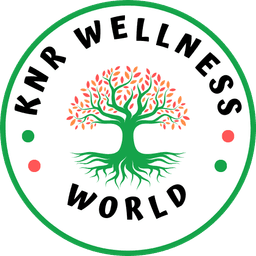
What is Hidden-Hunger and why good nutrition is essential to fight it
what-is-hidden-hunger-and-why-good-nutrition-is-essential-to-fight-it.
When I was a child, I loved the game of hide and seek. I would count to 50 while my friends ran and hid. And my role was to then search and catch them. Even though they were present, they were just not seen. Hunger is also like that; it may be present but just not seen.
When your body does not get sufficient calories from food intake, your brain triggers a signal to communicate that there is still a need for more food. Your stomach would growl, and you may feel faint. This is what we often think of as hunger; it is not at all hidden to us, we feel it and experience it every few hours a day.
But when you are deficient in a specific micronutrient, say vitamin D or magnesium, your brain does not get that same clear signal. This form of hunger – known as hidden hunger or micronutrient deficiency – is often ignored or overshadowed by hunger related to energy deficits.
What is Hidden Hunger?
According to the Global Hunger Index: The Challenge of Hidden Hunger, more than two billion people are suffering from hidden hunger or micronutrient deficiency. Often overlooked and difficult to detect, micronutrient deficiency weakens the immune system, stunts physical and intellectual growth, and can even lead to death.
Malnutrition, like hunger, can be hidden in plain sight, as undernourishment may overlap with obesity. Our bodies might not be starving due to a lack of calories, but due to a lack of essential micronutrients.
This is part of what is known as the triple burden of malnutrition — the coexistence of:

- Undernutrition and/or food insecurity: 1 billion people go hungry because they do not get enough food to eat.
- Overweight and obesity: 5 billion people are overweight often because they consume too many empty calories.
- Micronutrient deficiency: 3 billion people are malnourished because they lack nutritious food.
Although pregnant women, children, and adolescents are often cited as the most vulnerable populations affected by hidden hunger, it damages the health of people throughout the life cycle.
Overcoming hunger and malnutrition in all its forms (including undernutrition, micronutrient deficiencies, overweight, and obesity) is about more than securing enough food to survive.
A healthy diet prevents malnutrition and promotes well-being by ensuring we’re consuming diverse meals full of essential fats, complex carbohydrates, vitamins, and minerals,
Nutrition’s Role in Reducing Hidden Hunger and Malnutrition
Nutrition is key to human well-being. Micronutrients such as vitamins and minerals are as essential as macronutrients such as protein, fat, and carbohydrates because of the role they play in supporting our overall health.
Although micronutrients such as iron, vitamin A, vitamin D, iodine, folate, and zinc are only required by the body in very small amounts, their deficiencies can result in covert or hidden symptoms that are difficult to detect clinically, such as:
- General fatigue
- Reduced ability to fight infections
- Impaired cognitive function, such as a loss of attention, concentration and focus, memory, and mood
- Implications for long-term health such as increasing one’s risk for chronic diseases
Leading a healthy, adequate, and nutritious diet is essential to fight hidden hunger, but nutrition education also has a part to play in helping people make healthier choices.
Ultimately, understanding the nutritional information available on food labels can empower people to make smarter eating decisions, choosing from a variety of foods and beverages that are higher in nutrient density throughout the day.
Nutrient density is a measure of how much nutrition you get per serving or per calorie eaten. It’s an important metric to develop a healthy diet.
When choosing between two food items with the same calorie amount, nutrient-dense food choice can provide your body with the protein, fiber, healthy fats, vitamins, and minerals we need every day, while low nutrient-dense choice may provide empty calories from sugar and saturated fat with no other significant nutrients. choose the food wisely.
